DIY manual water pump: a review of the best homemade products
Pumping water with a hand pump, of course, is not as convenient as its electric counterpart. The speed of work is not even a close comparison. However, there are situations when a manual water pump is a necessary, and sometimes the only possible solution. For example, as a temporary type at the stage of the device of water supply at home. Buying a device for short-term use is unreasonable. Do you agree?
We offer extensive information on do-it-yourself hand pump options. We give proven practices that are available to home masters in terms of costs and implementation methods. The homemade product created according to our advice will safely serve the time allotted to it.
In the presented article there are valuable recommendations to craftsmen who want to implement a difficult idea. Carefully described are popular and less sought-after models. The information is backed up by photo collections, diagrams and video guides.
The content of the article:
Purpose of manual models
The main purpose of the use of pumping equipment is to pump water from a source to certain points: in a residential building, a bathhouse, a garage, a vegetable garden. In suburban areas, the source is most oftenwells and wells, less often - ponds and other bodies of water.
All residential or country houses can be divided into three categories: permanent, seasonal and periodic residence. Not all of them have electricity, and some are supplied irregularly.
If we summarize all of these factors, we can draw the following conclusions:
- in permanent homes, electricity is used by default, so the main equipment for pumping water is an electric pump, and the manual model is a spare standby unit;
- if the dacha is used only in the summer and power lines are connected, then the volatile version also fits perfectly, and the manual fixture plays a secondary role;
- The cottage plot without electricity is most in need of manual equipment.
For irrigation of 2-3 flower beds, you can still scoop up water with buckets, but to ensure full and daily watering of beds, greenhouses and lawns, you need a pump. This is where a model comes in handy that requires a pair of hands to service.
You can make the simplest column yourself by applying the skills of welding and assembling metal or plastic parts.

Some craftsmen are building reliable equipment for wells and wells, which has been serving properly for years. We present a review of homemade products for the manufacture of which improvised material was used.
Types of devices for pumping water
The physical force used to lift water upward is not enough, as the process becomes difficult and time-consuming. Therefore, mankind has long ago come up with many devices that facilitate the lifting of fluid from a well or natural reservoir to the surface.
All devices are united by a common principle of operation, which is based on the interaction of the valve system.
There are a lot of varieties of hand pumps, but four main types can be distinguished:
- piston;
- deep stock (varieties of piston);
- winged;
- membrane.
For manufacturing at home, the first type is usually chosen if it is necessary to maintain a well of small depth (3-6 m), or the second if it is necessary to lift water from a well from a depth of 10-12 m.
These models are considered the most productive, easy to assemble and install, reliable. The rest have significant drawbacks, the largest of which is considered insufficient productivity.
It was piston devices that occupied the main niche among factory manual equipment, they are popular among home craftsmen.
The advantage of reciprocating column pumps is the ease of assembly and installation. All parts necessary for the manufacture of the housing and dynamic parts can be found on the farm or purchased.
And to connect the elements into a single device, usually enough home tools: drills, circular saws, hacksaws, pliers, keys. If you need a welding machine, then it can be rented or borrowed from neighbors.
Popular Handicraft Pumps
To pump water from one place to another, all kinds of manual pumps are used. Their principle of operation is based on the simplest laws of physics, according to which water can move through pipes and vessels due to differences in temperature, pressure, height, etc. Let us find out how devices made by amateur craftsmen work.
Option # 1 - Casing Piston
Homemade invented by the master for a specific purpose - for well pumping. However, it turned out to be quite productive, therefore, it was later used for pumping water from the pond and as a backup version of the pump during a power outage.
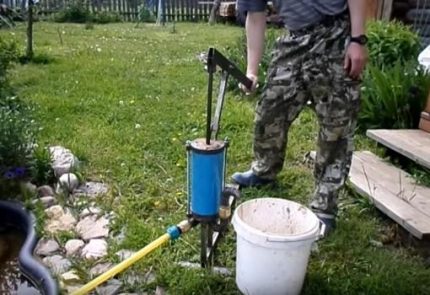
All cutting of steel elements is carried out by an electric circular saw. If you use a hand tool, then the manufacture will drag on for a long time.
To perform the connection of metal parts, experience in welding is required. If you are new to this business, we recommend that you familiarize yourself with rules and nuances of welding.
Homemade pump parts overview:
For installation on the ground, a kind of foundation is used - a structure of metal pipes 20 * 40 mm and 20 * 20 mm. Thanks to the long welded pipes, the pump stands firmly in a strictly vertical position.
Option # 2 - a rod pump for a well
The model, made of a ready-made fire extinguisher case, differs from the previous one in reliability and greater productivity.
A home-made "samovar" can be safely installed on a well up to 15 m deep. It is not necessary to use it in a constant mode, however, in the absence of electricity or for cleaning a well, it will be simply irreplaceable.
The principle of operation is the same: due to rarefaction in the zone of movement of the piston, water flows from the well into the pump housing, and from there through the outlet pipe to the outside, into the substituted container.
The device is suitable for servicing a well, well, pool, pond or other body of water. It can pump not only clean water, but also dirty liquid with silt, sand and dirt.
For manufacturing, you will need a tool for cutting and processing metal parts, as well as a welding machine. We will consider the distinctive features of the model in more detail.
From above, all metal parts are treated with a primer to protect against corrosion, since the pump will be outdoors, in the open.
On top of the primer, it must be coated with metal paint to make the protective layer as strong and tight as possible.
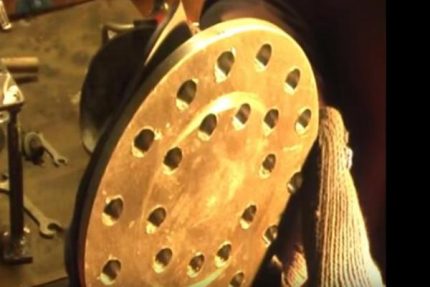
It is difficult to judge the exact performance of the device; testing is necessary. However, it can be said that about one to three liters of water is pumped at one click of the lever, that is, with just 3-4 clicks you can fill the bucket.
If the instructions for assembling your homemade work seemed complicated to you and you do not want to waste time manufacturing, but you need a pump for pumping dirty water, we advise you to look at ready-made models sold in stores. And to make it easier for you to choose the right model, we suggest that you familiarize yourself with the best drainage pumpsrepresented in the market.
Option # 3 - collapsible model for the summer season
If the well is shallow, an economical and easy-to-use plastic model will cope with the delivery of water to the top.

For self-assembly you will need:
- 50 mm sewer plastic pipes - 2 pieces of 3 m each;
- strainer for mounting on the end of the pipe;
- thin PP pipe 20 mm with thread for mounting the check valve;
- factory-made check valve;
- handle fastening from a tee 25 * 20 mm with a soldered thread;
- metal tube for the handle;
- fluoroplastic gasket for the manufacture of the piston;
- clamps with dowels for fixing the pipe to the walls of the well.
Assembly is as follows. To the flexible PP pipe with a diameter of 20 mm, along which water will move, first a PTFE piston is screwed, then a check valve.
Insert it into a plastic sewer pipe with a diameter of 50 mm, from the side of the check valve close the nozzle with a filter. It turns out the design "pipe in pipe", which must be immersed in the well.

To the other end of the PP pipe, a tee is wound, a handle is inserted into it. To pump water, you need to take the handle with both hands and move the pipe up / down.
Outwardly and in the way the handle moves, the pump resembles a manual analogue for pumping bicycle wheels.
The outer part is complemented by a spout from a piece of sewer pipe and two fittings - a tee and a 90º angle. During the movement of the handle up / down, water is poured from the spout (spout) into the substituted container.
One of the advantages of a simple plastic model is that it can be quickly disassembled. With the onset of cold weather, the outer parts are removed, and the PP pipe is simply pulled out. As a result, there is only one element left - the sewer pipe, but nothing threatens her in the well shaft.
If you change your mind about making a homemade pump, you can always buy ready-made equipment in the store. Well pump selection tips we brought here.
Less popular manual modifications
In addition to piston models, which have proven themselves perfectly in factory and artisanal designs, other devices are also used.
They are less productive, but interesting in terms of design and operating principle.
There are factory models that are impractical to make with your own hands. For example, impeller-based equipment. Such devices are used in the industrial sector, for giving they are not very convenient.
In addition, to buy a compact metal device that looks like a spin for cans will cost no more than to do it yourself.
None of the above designs of homemade pumps suits you? Then we recommend that you look at more homemade options, the manufacture of which we have considered in the next article.
Conclusions and useful video on the topic
Before embarking on an independent manufacture of a hand pump, study the experience of home craftsmen. This will help not only learn new technologies, but also avoid annoying mistakes.
Membrane pump operation:
Hose Equipment Instructions:
Testing a simple model for $ 6:
Assembly, completion and installation of a factory product:
The manual water pump is a great helper in difficult situations. If an accident occurs on the electric highway, you will not be left without water: you can pump several buckets from the well with a manual pump.
And to assemble a useful device yourself, you don’t need to study complex technologies or look for special materials - you will find everything in the household.
You decided to assemble a home-made pump for water from improvised materials? Maybe you want to clarify some points that are not fully understood in this material? Ask your questions in the comments section - we will try to help you.
Or maybe you want to supplement our article with clarifications or useful recommendations? Please write to us about this, express your opinion.

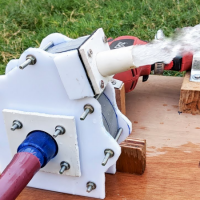 How to make a water pump with your own hands: we disassemble the 13 best home-made options
How to make a water pump with your own hands: we disassemble the 13 best home-made options 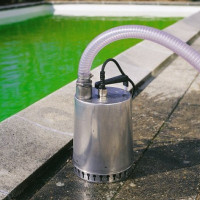 How to choose a pump for pumping dirty water: selection rules and an overview of the best models
How to choose a pump for pumping dirty water: selection rules and an overview of the best models  Choosing a pump for a well: how to choose a unit + an overview of the best brands
Choosing a pump for a well: how to choose a unit + an overview of the best brands  Do-it-yourself repair of the Aquarius pump: an overview of typical breakdowns and their elimination
Do-it-yourself repair of the Aquarius pump: an overview of typical breakdowns and their elimination 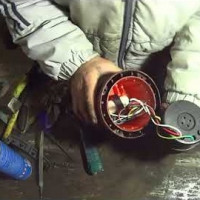 Do-it-yourself water pump repair: an overview of the most popular failures
Do-it-yourself water pump repair: an overview of the most popular failures 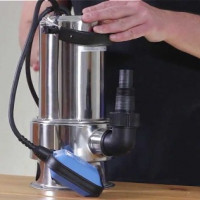 How to repair the drain pump yourself: an overview of frequent breakdowns
How to repair the drain pump yourself: an overview of frequent breakdowns  How much does it cost to connect gas to a private house: the price of organizing gas supply
How much does it cost to connect gas to a private house: the price of organizing gas supply  The best washing machines with dryer: model rating and customer tips
The best washing machines with dryer: model rating and customer tips  What is the color temperature of light and the nuances of choosing the temperature of the lamps to suit your needs
What is the color temperature of light and the nuances of choosing the temperature of the lamps to suit your needs  Replacement of a geyser in an apartment: replacement paperwork + basic norms and requirements
Replacement of a geyser in an apartment: replacement paperwork + basic norms and requirements
He spent his childhood in the private sector - then every second had a piston pump, made independently. But then people had no choice, they had to spin somehow. And now you can buy the right equipment, it’s not so expensive to dodge and do it yourself. The photo shows that in homemade pumps a lot of water flows by - in our time, with the expected shortage of fresh water, this is unacceptable waste.
In our climate, talking about wasting water is the height of stupidity! Keep the forests around the rivers and the water will at least flood! We don’t live in the Sahara!
I agree that now such devices are inexpensive, but in our village there is a makeshift. Made for a long time, piston, simple. It suits everyone, the water doesn’t seem to pour much past, so why change it? Of course, if they put it now, they would buy a new one. But who has their hands growing from the right place and there is time for such work, why not do it yourself.
I have a centralized water supply in my country house, but anything can happen, so I made a well in reserve. I don’t use it constantly, so I don’t need an electric pump. Put a simple manual piston pump. Its advantages are obvious - it does not depend on the availability of electricity, it is easy to assemble and use. Of the minuses - it will not be able to raise water from a great depth. But it turned out to be enough for me.
Here we have a well on the sand and quite shallow, in my opinion eight / nine meters. We decided that it makes no sense to install an electric pump, since we need very little water in the country. In general, it is required only for watering. And we go to take drinking water to a spring, which is well equipped and well maintained. So we put a hand pump, such as in your photo material with a pen.
I live in a village and we don’t have a central water supply, and to draw water from a well, especially when it needs a lot, one hassle. So I decided to make a manual pump for water. I ordered a hole punch, after which I installed a pump and an ordinary column with a handle. Now it’s easy and convenient to draw water, the water pressure is good, a bucket of 10 liters is typed in just a few seconds.
For the piston, you can apply not only metal but also, for example, 10 mm fiberglass. And cheaper and easier to process!
In the picture with the bicycle - which unit is used as the pump itself? (below on the frame is something blue, small)
I understand that you are interested in the solution of a hand pump, where centrifugal force is used. At the expense of the unit, under the bike about which you asked - this is the centrifugal surface pump itself. Here, the rod is not driven by an electric motor, as was originally conceived, but by the pedals of a bicycle.
To be honest, this is not the easiest solution, since here you will need a lot of things:
- old centrifugal surface pump;
- bike;
- a special adapter frame (you have to cook yourself).
As you can see, not the simplest and most practical solution in fact is obtained. When assembled, the centrifugal surface pump looks like this. And in the photo of the homemade product there is no electric motor.